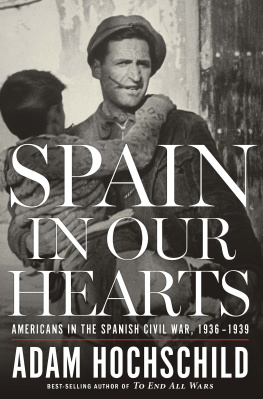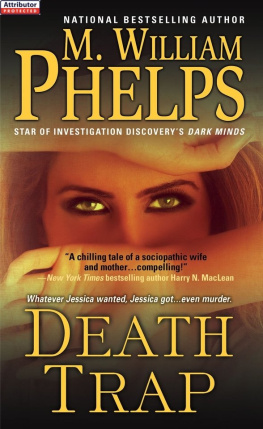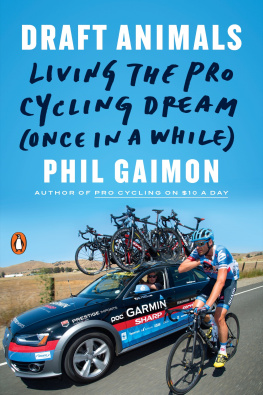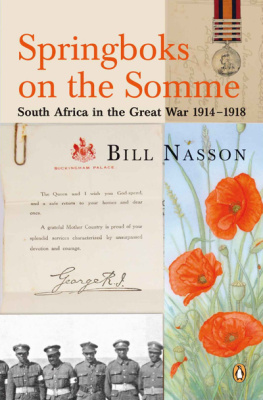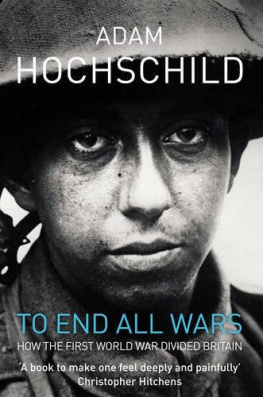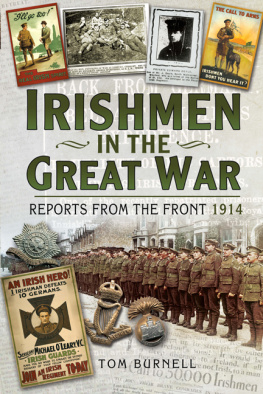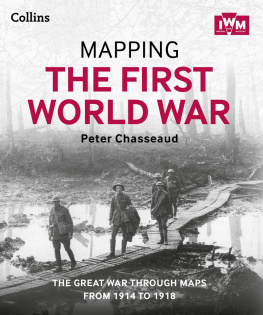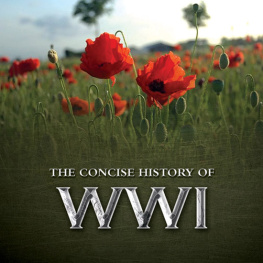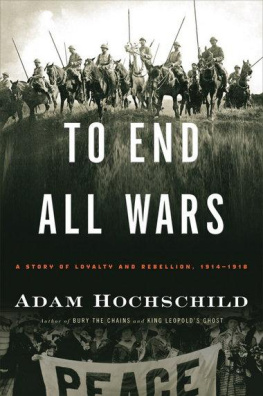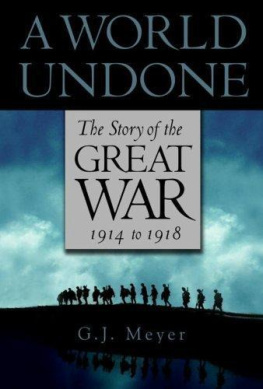Tantor Media. - To end all wars: a story of loyalty and rebellion, 1914-1918
Here you can read online Tantor Media. - To end all wars: a story of loyalty and rebellion, 1914-1918 full text of the book (entire story) in english for free. Download pdf and epub, get meaning, cover and reviews about this ebook. City: Great Britain, year: 2011, publisher: Houghton Mifflin Harcourt;Tantor Media, genre: History. Description of the work, (preface) as well as reviews are available. Best literature library LitArk.com created for fans of good reading and offers a wide selection of genres:
Romance novel
Science fiction
Adventure
Detective
Science
History
Home and family
Prose
Art
Politics
Computer
Non-fiction
Religion
Business
Children
Humor
Choose a favorite category and find really read worthwhile books. Enjoy immersion in the world of imagination, feel the emotions of the characters or learn something new for yourself, make an fascinating discovery.
- Book:To end all wars: a story of loyalty and rebellion, 1914-1918
- Author:
- Publisher:Houghton Mifflin Harcourt;Tantor Media
- Genre:
- Year:2011
- City:Great Britain
- Rating:3 / 5
- Favourites:Add to favourites
- Your mark:
- 60
- 1
- 2
- 3
- 4
- 5
To end all wars: a story of loyalty and rebellion, 1914-1918: summary, description and annotation
We offer to read an annotation, description, summary or preface (depends on what the author of the book "To end all wars: a story of loyalty and rebellion, 1914-1918" wrote himself). If you haven't found the necessary information about the book — write in the comments, we will try to find it.
To end all wars: a story of loyalty and rebellion, 1914-1918 — read online for free the complete book (whole text) full work
Below is the text of the book, divided by pages. System saving the place of the last page read, allows you to conveniently read the book "To end all wars: a story of loyalty and rebellion, 1914-1918" online for free, without having to search again every time where you left off. Put a bookmark, and you can go to the page where you finished reading at any time.
Font size:
Interval:
Bookmark:
Copyright 2011 by Adam Hochschild
All rights reserved
For information about permission to reproduce selections from this book, write to or to Permissions, Houghton Mifflin Harcourt Publishing Company, 3 Park Avenue, 19th Floor, New York, New York 10016.
www.hmhco.com
The Library of Congress has cataloged the print edition as follows:
Hochschild, Adam.
To end all wars : a story of loyalty and rebellion, 19141918 / Adam Hochschild.
p. cm.
Includes bibliographical references and index.
ISBN 978-0-618-75828-9
1. World War, 19141918Great Britain. 2. World War, 19141918Social aspectsGreat Britain. 3. SoldiersGreat BritainBiography. 4. Conscientious objectorsGreat BritainBiography. 5. LoyaltyCase studies. 6. World War, 19141918Psychological aspects. 7. World War, 19141918Moral and ethical aspects. 8. MilitarismGreat BritainHistory20th century. 9. PacifismGreat BritainHistory20th century. I. Title.
D 546. H 63 2011
940.3'41dc22 2010025836
e ISBN 978-0-547-54921-7
v5.0216
Cover design by Michaela Sullivan
Cover images: top, buyenlarge/Getty Images; bottom, Corbis Images
Photo credits appear on .
For Tom Engelhardt,
analyst of empire, emperor among editors
INTRODUCTION
A N EARLY AUTUMN BITE is in the air as a gold-tinged late afternoon falls over the rolling countryside of northern France. Where the land dips between gentle rises, it is already in shadow. Dotting the fields are machine-packed rolls, high as a persons head, of the years final hay crop. Massive tractors pull boxcar-sized cartloads of potatoes, or corn chopped up for cattle feed. Up a low hill, a grove of trees screens the evidence of another kind of harvest, reaped on this spot nearly a century ago. Each gravestone in the small cemetery has a name, rank, and serial number; 162 have crosses, and one has a Star of David. When known, a mans age is engraved on the stone as well: 19, 22, 23, 26, 34, 21, 20. Ten of the graves simply say, A Soldier of the Great War, Known unto God. Almost all the dead are from Britains Devonshire Regiment, the date on their gravestones July 1, 1916, the first day of the Battle of the Somme. Most were casualties of a single German machine gun several hundred yards from this spot, and were buried here in a section of the front-line trench they had climbed out of that morning. Captain Duncan Martin, 30, a company commander and an artist in civilian life, had made a clay model of the battlefield across which the British planned to attack. He predicted to his fellow officers the exact place at which he and his men would come under fire from the nearby German machine gun as they emerged onto an exposed hillside. He, too, is buried here, one of some 21,000 British soldiers killed or fatally wounded on the day of greatest bloodshed in the history of their countrys military, before or since.
On a stone plaque next to the graves are the words this regiments survivors carved on a wooden sign when they buried their dead:
THE DEVONSHIRES HELD THIS TRENCH
THE DEVONSHIRES HOLD IT STILL
The comments in the cemeterys visitors book are almost all from England: Bournemouth, London, Hampshire, Devon. Paid our respects to 3 of our townsfolk. Sleep on, boys. Lest we forget. Thanks, lads. Gt. Uncle thanks, rest in peace. Why does it bring a lump to the throat to see words like sleep, rest, sacrifice, when my reason for being here is the belief that this war was needless folly and madness? Only one visitor strikes a different note: Never again. On a few pages the ink of the names and remarks has been smeared by raindropsor was it tears?
The bodies of soldiers of the British Empire lie in 400 cemeteries in the Somme battlefield region alone, a rough crescent of territory less than 20 miles long, but graves are not the only mark the war has made on the land. Here and there, a patch of ground gouged by thousands of shell craters has been left alone; decades of erosion have softened the scarring, but what was once a flat field now looks like rugged, grassed-over sand dunes. On the fields that have been smoothed out again, like those surrounding the Devonshires cemetery, some of the tractors have armor plating beneath the drivers seat, because harvesting machinery cannot distinguish between potatoes, sugar beets, and live shells. More than 700 million artillery and mortar rounds were fired on the Western Front between 1914 and 1918, of which an estimated 15 percent failed to explode. Every year these leftover shells kill people36 in 1991 alone, for instance, when France excavated the track bed for a new high-speed rail line. Dotted throughout the region are patches of uncleared forest or scrub surrounded by yellow danger signs in French and English warning hikers away. The French government employs teams of dmineurs, roving bomb-disposal specialists, who respond to calls when villagers discover shells; they collect and destroy 900 tons of unexploded munitions each year. More than 630 French dmineurs have died in the line of duty since 1946. Like those shells, the First World War itself has remained in our lives, below the surface, because we live in a world that was so much formed by it and by the industrialized total warfare it inaugurated.
Even though I was born long after it ended, the war always seemed a presence in our family. My mother would tell me about the wild enthusiasm of crowds at military parades whenat last!the United States joined the Allies. A beloved first cousin of hers marched off to the sound of those cheers, to be killed in the final weeks of fighting; she never forgot the shock and disillusionment. And no one in my fathers family thought it absurd that two of his relatives had fought on opposite sides of the First World War, one in the French army, one in the German. If your country called, you went.
My fathers sister married a man who fought for Russia in that war, and we owed his presence in our lives to events triggered by it: the Russian Revolution and the bitter civil war that followedafter which, finding himself on the losing side, he came to America. We shared a summer household with this aunt and uncle, and friends of his who were also veterans of 19141918 were regular visitors. As a boy, I vividly remember standing next to one of them, all of us in bathing suits and about to go swimming, and then looking down and seeing the mans foot: all his toes had been sheared off by a German machine-gun bullet somewhere on the Eastern Front.
The war also lived on in the illustrated adventure tales that British cousins sent me for Christmas. Young Tim or Tom or Trevor, though a mere teenager whom the colonel had declared too young for combat, would bravely dodge flying shrapnel to carry that same wounded colonel to safety after the regiment, bagpipes playing, had gone over the top into no mans land. In later episodes, he always managed to find some wayas a spy or an aviator or through sheer boldnessaround the deadlock of trench warfare.
As I grew older and learned more history, I found that this very deadlock had its own fascination. For more than three years the armies on the Western Front were virtually locked in place, burrowed into trenches with dugouts sometimes 40 feet below ground, periodically emerging for terrible battles that gained at best a few miles of muddy, shell-blasted wasteland. The destructiveness of those battles still seems beyond belief. In addition to the dead, on the first day of the Somme offensive another 36,000 British troops were wounded. The magnitude of slaughter in the wars entire span was beyond anything in European experience: more than 35 percent of all German men who were between the ages of 19 and 22 when the fighting broke out, for example, were killed in the next four and a half years, and many of the remainder grievously wounded. For France, the toll was proportionately even higher: one
Next pageFont size:
Interval:
Bookmark:
Similar books «To end all wars: a story of loyalty and rebellion, 1914-1918»
Look at similar books to To end all wars: a story of loyalty and rebellion, 1914-1918. We have selected literature similar in name and meaning in the hope of providing readers with more options to find new, interesting, not yet read works.
Discussion, reviews of the book To end all wars: a story of loyalty and rebellion, 1914-1918 and just readers' own opinions. Leave your comments, write what you think about the work, its meaning or the main characters. Specify what exactly you liked and what you didn't like, and why you think so.

